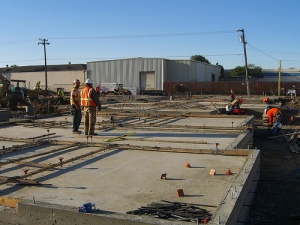——————————
Long-time readers of the blog may remember my earlier post on substantial completion. However, in looking over my blog stats to see what search terms lead people here, it looks like this is hot topic. The blog searches came in two general categories:
1. Those searching strictly for a definition of substantial completion. Some examples:
- What does “substantial completion” mean?
- when does a building achieve substantial completion
- contracts “substantial completion”
- substantial completion undefined
- when is a project substantially complete
For those of you who want a definition, I refer you to my earlier post. Essentially, however, the term is not always defined, which can be part of the problem. If you are using AIA contract documents, there is a built in description that defines it as when the Owner can occupy or use the building. Even the AIA definition, however does not state that there must be a permanent or temporary certificate of occupancy before substantial completion can occur. While some might presume that a certificate of occupany is required, better practice would be to include language that specifically states that substantial completion also requires that the Contractor deliver to the Owner a certificate of occupany. This leads to the second major category of blog search terms related to substantial completion:
2. Those looking to compare substantial completion with certificates of occupancy. Examples include:
- certificate of substantial completion vs certificate of occupancy
- substantial completion or final completion
- completion vs substantial completion
- construction certificate of substantial completion
This can be a confusing distinction, but in reality the two are generally unrelated to each other [unless you state that a Certificate of Occupancy is part of the Substantial Completion process.] A Certificate of Occupancy is issued by the Building Department official when the building fulfills all requirements to be safely occupied. In contrast, a Certificate of Substantial Completion is requested the contractor and granted by the architect. Sometimes things that need to be completed before the architect can issue a certificate of substantial completion do not prevent the building of receiving Certificate of Occupancy. [Unless, that is, you are in an odd jurisdiction, where a Building Inspector will demand a Certificate of Substantial Completion before issuing a Certificate of Occupancy.] A final note: for those who were wondering about Final Completion, this occurs after the final inspection; i.e., after the architect verifies that the punch list is complete and all contract terms have been met. [The punch list work can be conducted while the Owner has beneficial use of the building.] At Final Completion, the final Certificate of Payment is issued. Confused yet? Drop me a line. And, share below: what has been your experience with certificates of occupancy and whether or not they relate to substantial completion?
Photo (c) Euromotorworks.



